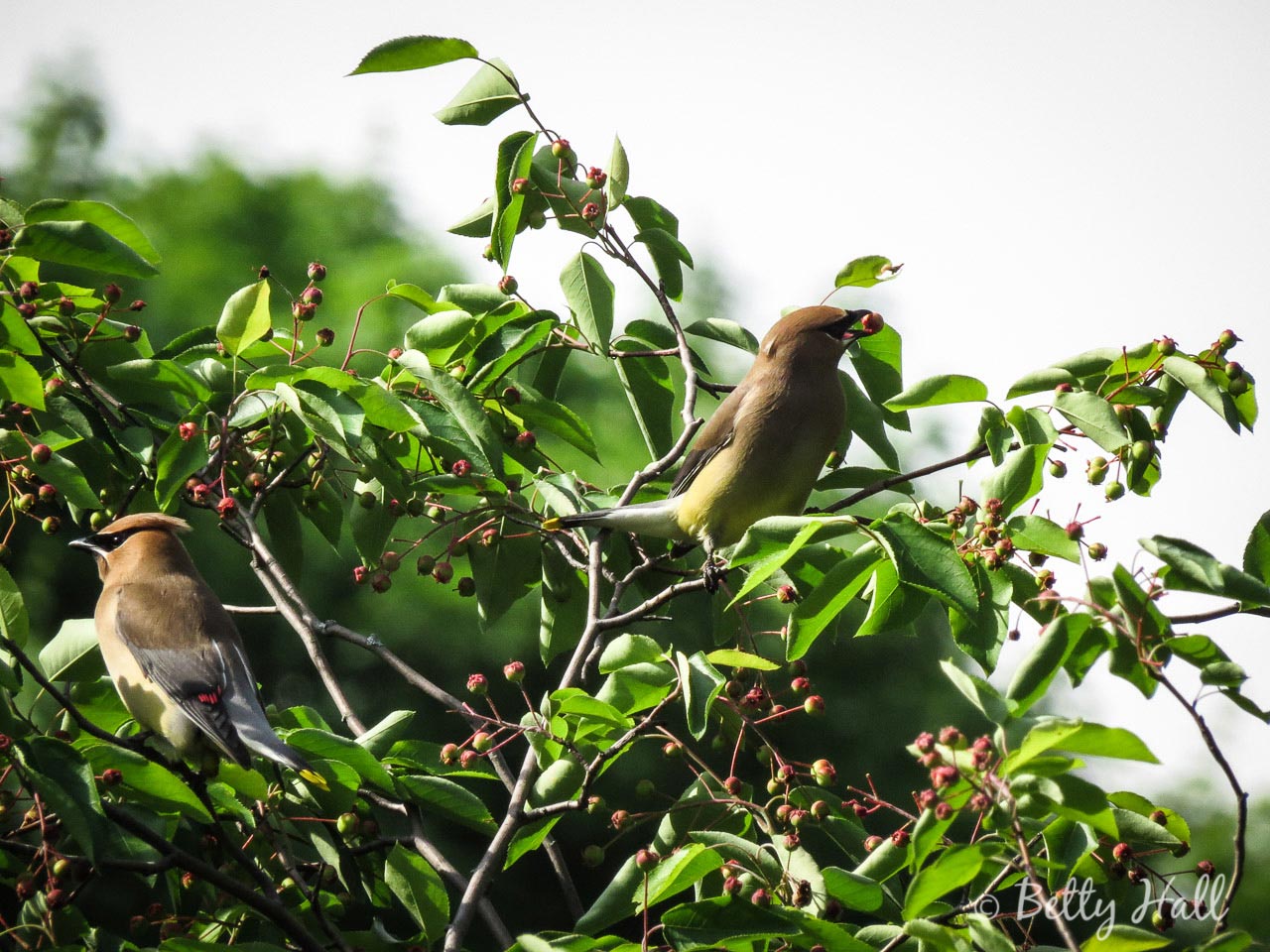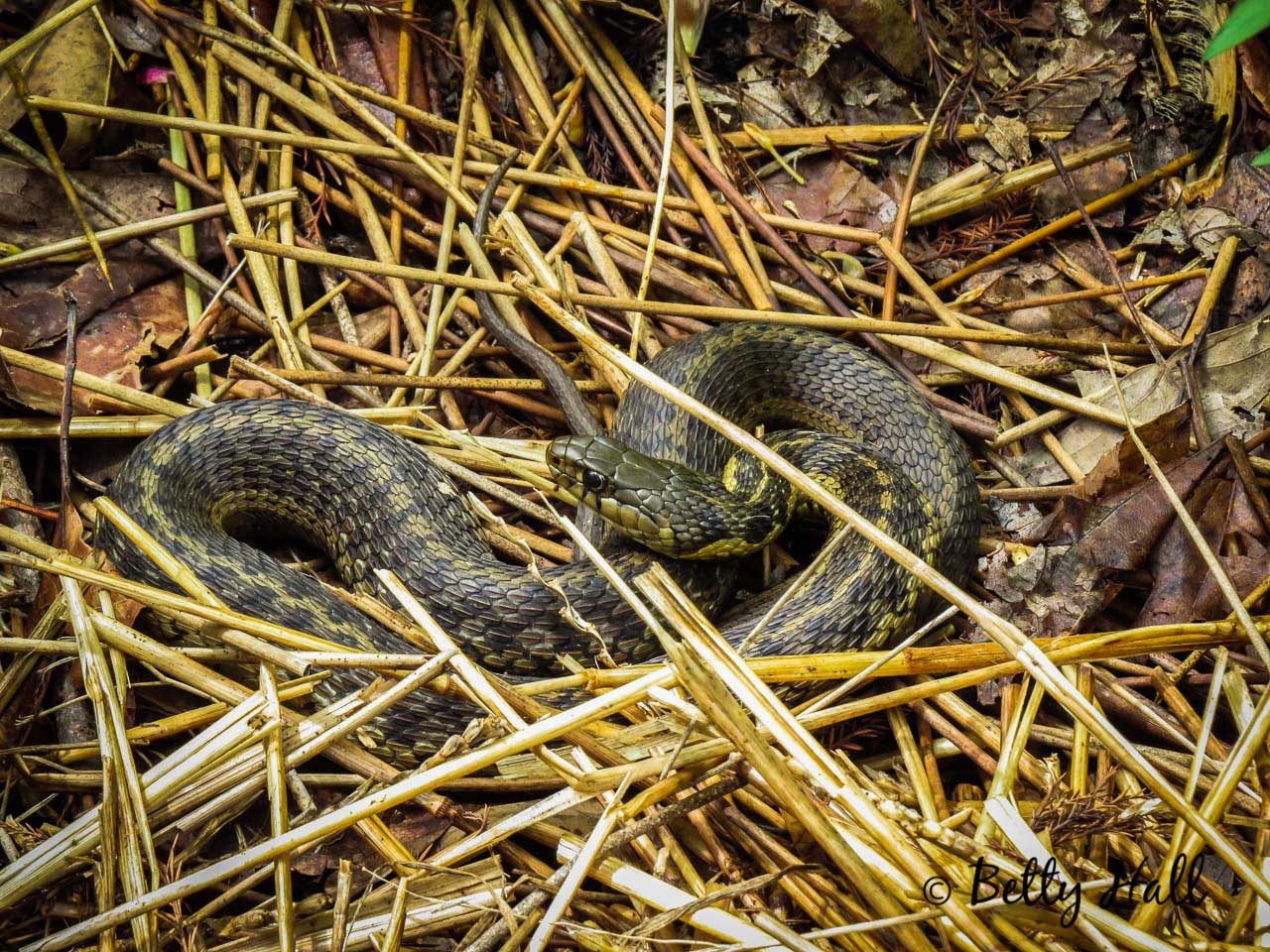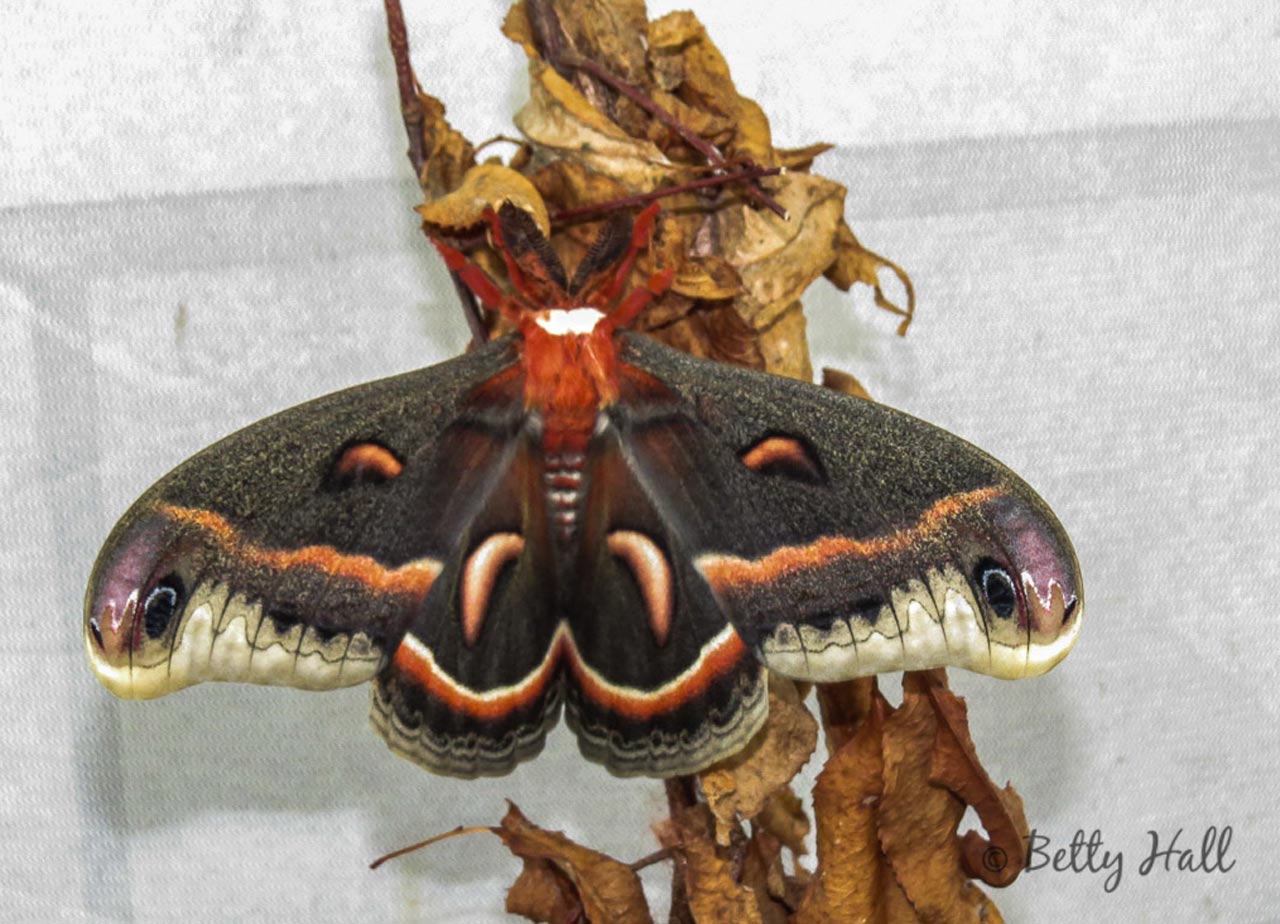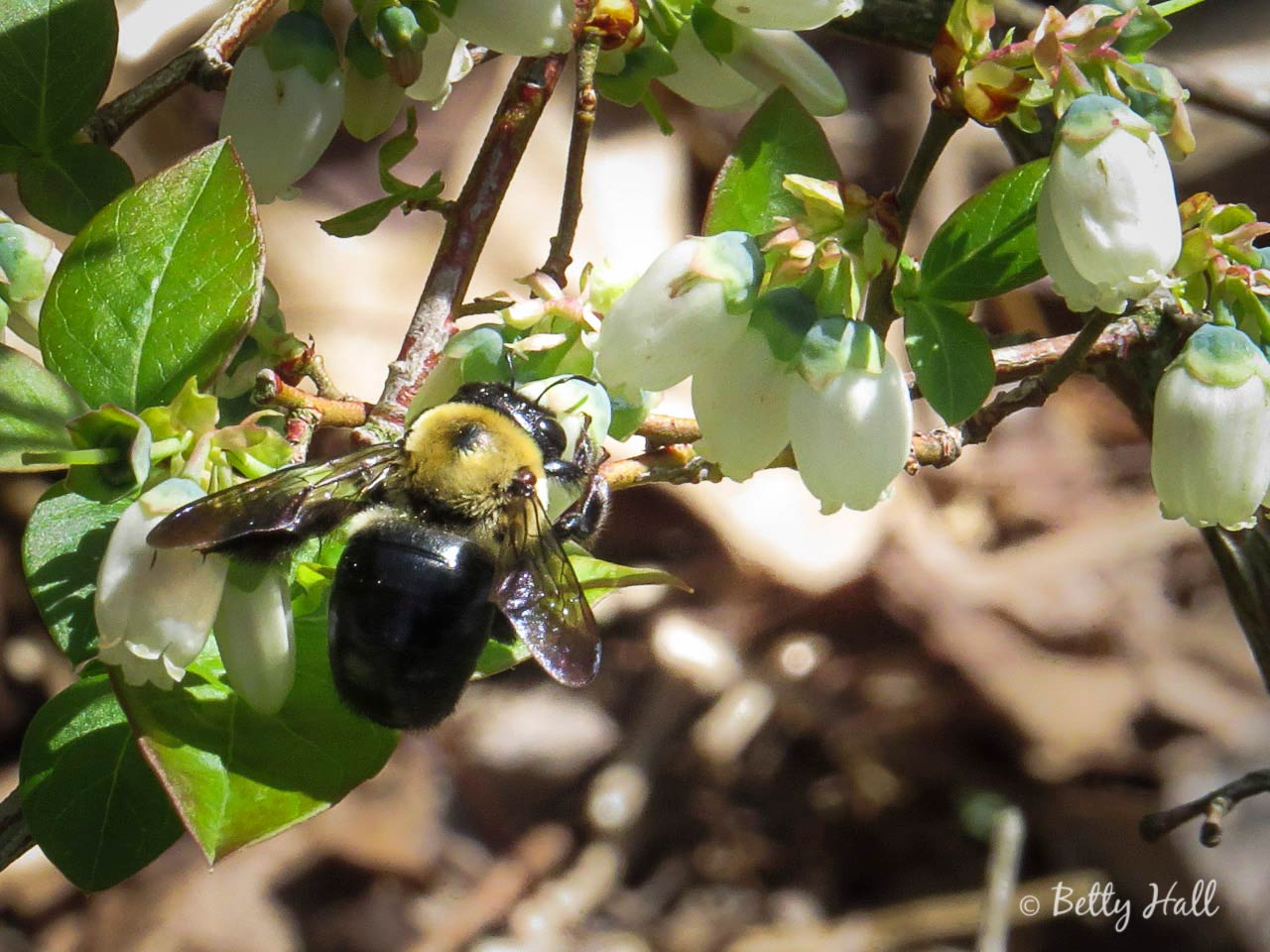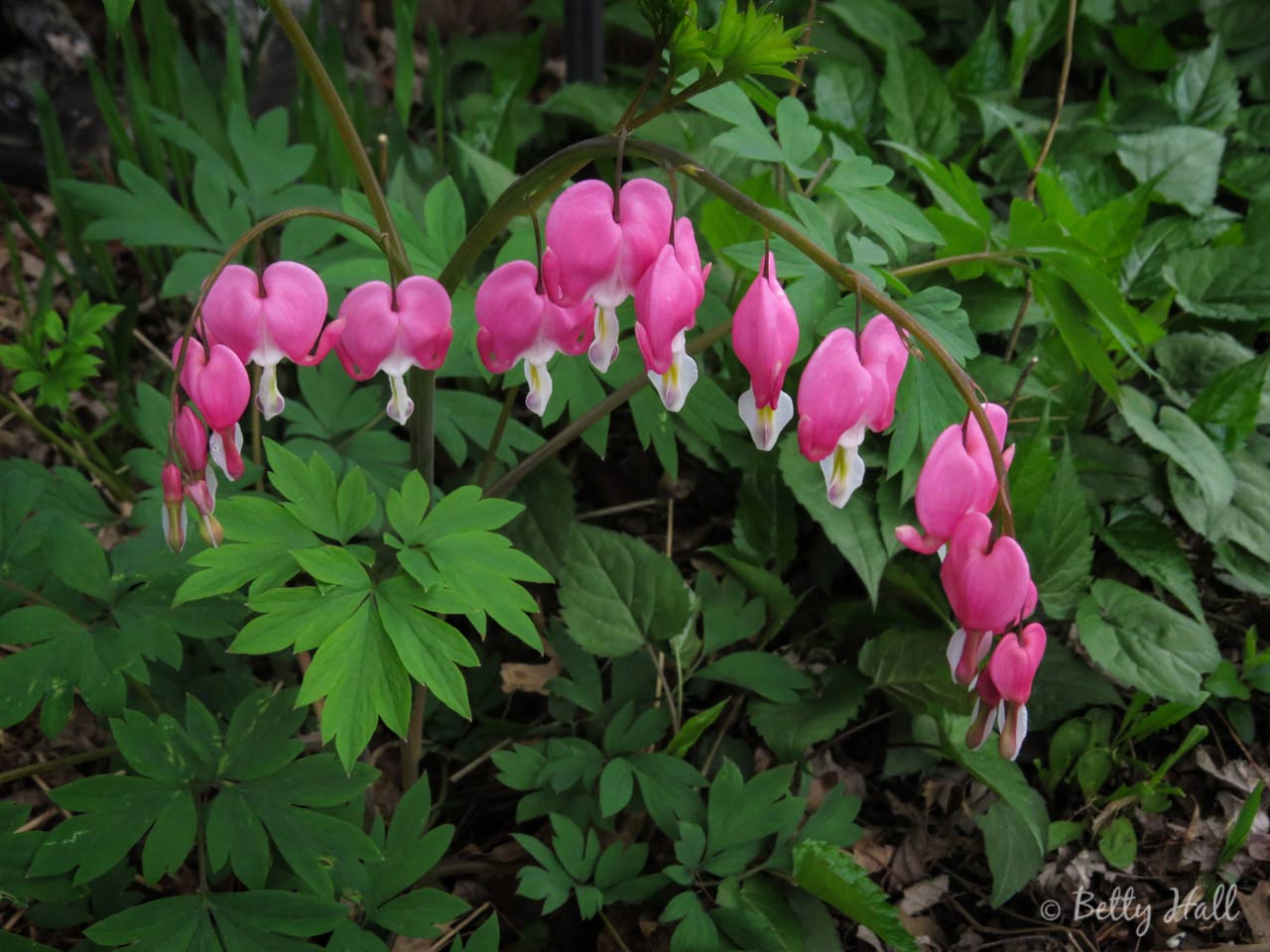We are currently enjoying our annual visit by cedar waxwings (Bombycilla cedrorum). They only appear as the berries begin to ripen on our neighbor’s downy serviceberry tree (Amelanchier arborea).
Category: Backyard
Garter snake
I know many folks are afraid of snakes, and I haven’t always fully appreciated them. However, I’ve come to understand that they are beneficial, and it was a treat to see this Garter snake basking in the backyard sun recently. Note the eye with a round pupil. Most poisonous snakes in North America have a vertical pupil.
Eastern Garter snakes (Thamnophis sirtalis) are one of the most common North American reptiles, and are considered harmless. Their appearance can vary, but they usually have three yellowish stripes. They feed on mice, slugs, insects, etc. Unlike other snakes that lay eggs, garter snakes give birth to live young.
I’m glad we don’t have to be concerned about posionous snakes in the yard, but I appreciate Garter snakes for the diversity and interest they provide. Although we don’t often see them, I’m glad to have them in the backyard.
Third generation Cecropia moth
Our Cecropia story began in 2012 when an injured moth laid eggs. Caterpillars from those eggs overwintered as cocoons, and emerged as moths last spring. One of those moths mated and laid eggs. The caterpillars grew and made cocoons that I left outside all winter. I was delighted to recently discover that this third generation moth had emerged.
Bees, butterflies, and birds
It’s good to watch to watch plants coming to life again, and I’m also glad to see more wildlife. I’m seeing more bees – large and small. I can’t identify most of them, but I can usually spot Carpenter bees (Xylocopa spp.). I learned recently they’re not bumble bees, although they certainly look similar. Carpenter bees have a shiny black abdomen, and are often referred to as the bee with a ‘shiny butt’. This one was getting nectar by puncturing blueberry blossoms.
Bleeding Hearts
I am amazed at the variety of shapes and colors of flowers, and I find the shape of Bleeding Hearts especially intriguing. This non-native one (Dicentra spectabilis) brings back many fond memories of my grandmother and her delightful flower garden. The plants get 2-3 feet tall, and the dangling blossoms on arching stems remind me of a charm bracelet. The flowers appear in April and May, and the attractive foliage dies back in mid-summer.

